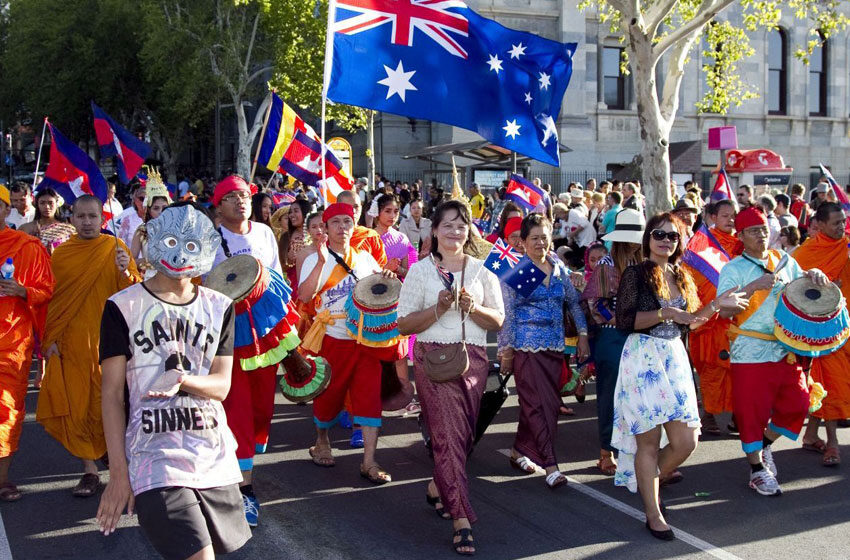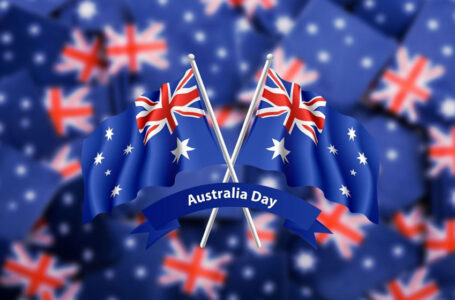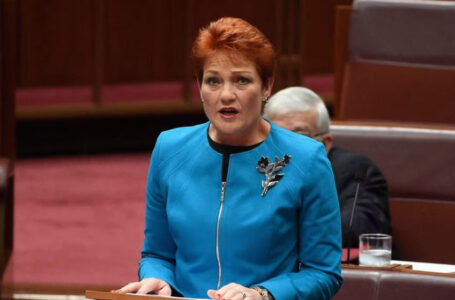AUSTRALIA DAY – ONE DAY, DIFFERENT MEANINGS

The day took different turns for different Australian communities and was commemorated in unique and distinguished ways to highlight the contrasting effects of a single day on various communities.
NOT ALL DAYS WERE CREATED EQUAL, NEITHER ARE THEY CELEBRATED EQUALLY.
When the first British Fleet set foot on Australian Island on 26th of January, 1788; the event marked the origin of modern day Australia but not without depriving indigenous people of their rights, properties and belongings. Those who arrived were not grateful but unkind. In pursuit of a progressive civilization on foreign land, they killed, usurped and seized what did not belong to them and even with subsequent realisation and some corrective measures, indigenous people still have reasons to feel disenfranchised.
One of the reasons why the celebration of the day on every January 26 has increasingly become a controversial affair and Australia Day, 2018 was no exception. The day took different turns for different Australian communities and was commemorated in unique and distinguished ways to highlight the contrasting effects of a single day on various communities.
Formal Processions in Melbourne
Just after 10:30 am, commemoration started with the official flag raising ceremony on Swanston Street marking the commencement of Australia Day celebrations. The much-awaited parade followed more than 100 cultural and community groups came together on St. Kilda Road and Swanston Street exhibiting the formidable history, one-of-the-kind heritage and diverse culture and tradition of Australia.
Once the parade came to an end, RACV Australia Day Festivities started in Kings Domain Gardens attracting thousands and thousands of cheerful people who got immersed in all the fun activities, children’s entertaining performances, car
exhibits and a plethora of food stalls.
With free entry, Government House was also open to the public between 9:30 am and, 4:30 pm as families enjoyed the tours of State Apartments and the view of legendary State Coach in the stables.
Flag Lowering Ceremony began around 4:15 pm at Shrine of Remembrance, St. Kilda Road featuring breath-taking spectacles put on by the Australian Navy Band and the 401 Air Cadet Squadron.
Australia Day celebrations would have been incomplete without a conspicuous display of fireworks. Skies tried to play spoilsport with mild showers but failed miserably to deter a single soul. People from all corners of Melbourne poured in to witness the dazzling magnificence in person as Docklands Harbour hosted a sensational show of pyrotechnics.
Anyone who was witness to above mentioned celebrations would have reasonably assumed it to be a happy day for all Australians but, it wasn’t so. At least not for the indigenous Australians – Aboriginal and Torres Strait Islander people – who had lived on the Island well before the British made their way to the land of the lost.
Invasion Day Protests Highlight Incongruity
While the arriving colonisers acquired a high-quality life for themselves over the years, it came at the cost of Aboriginal and Torres Strait Islander peoples’ rights which were equally Australian, if not more. 2018 marked the 230 years of indigenous defiance of colonisation and 80 years of agitation against a rather insensitive celebration of massacre and usurpation of property and fundamental rights by the people who colonised their land.
With time people have started to realise and understand the other side of the argument. That’s why Melbourne’s Invasion Day rally pulled no less than 40,000 people from all over the city who raised their dissenting voice against the celebration of what can be unerringly classified as genocide and unfair colonisation.
The protests were not limited to Melbourne as people in Sydney, Brisbane, Hobart, Perth, Adelaide, and even in regional towns came out on the streets to register their outcry. Banners and placards were hoisted in the air by a passionate crowd who asked thought-provoking questions about the legitimacy and sentimental relevance of the celebrations.
Marchers demanded that Australia Day celebrations be moved to another day so as not to hurt the sentiment of indigenous communities.
The platform was set up for Aborigina and Torres Strait Islander peoples to talk while non-indigenous listened intently. Grassroots political leaders such as Jenny Munroe and Gary Foley made fiery speeches which were greeted with acknowledgment and applause. Many protesters were filled with hope and anticipation to see large crowds, which were later estimated to be anywhere between 40,000 to 60,000, and avidly expressed their solidarity with indigenous people who were wronged 230 years ago.
The protests were not limited to Melbourne as people in Sydney, Brisbane, Hobart, Perth, Adelaide, and even in regional towns came out on the streets.
Marchers demanded that Australia Day celebrations be moved to another day so as not to hurt the sentiment of indigenous communities as well as their representation in country politics be made more transparent and prominent than it is now. They were of the view that current legislation is more often than not crafted by lawmakers who do not represent indigenous people which results in ineffective law-making that does not solve the real issues of Aboriginal and Torres Strait peoples but only causes wasteful utilisation of public funds.
Indian Republic Day in Melbourne
Amidst the tug of war between the colonisers and the colonised, the fortuitous coinciding of Indian Republic and Australian Days meant the day held an entirely different meaning for resident Indians. Slightly apart in definition but identical in spirit, the day marks the celebration of when Constitution of India came into effect in 1950.
Indian Embassy staged its Flag Raising Ceremony in the morning signifying the importance of January 26th for emerging South Asian economic power. Country’s anthem Jana Gana Mana was played and sung as Indian flag raised higher and higher towards the sky. Australian and Indian dignitaries attending the event talked about opportunities and mutual relationship between the countries and its people.
Melbourne Stars, T20 cricketing franchise, also celebrated the day at Melbourne Cricket Ground (MCG) in their Big Bash League fixture on 27th January. The community ambassador Nancy Loomba hoped to see Australia’s biggest ever Indian Republic Day party as dress up march along with traditional dance routines engulfed every Indian with passion.
This is a story of one day, in one country and one city.
Celebrated by some. Protested by some. Commemorated by some. No matter how it was perceived and which side you incline to, the Australia Day has turned into a schizophrenic yet powerful and influential occasion to forcefully parade what you believe in and what you hold dear in your heart and mind.













